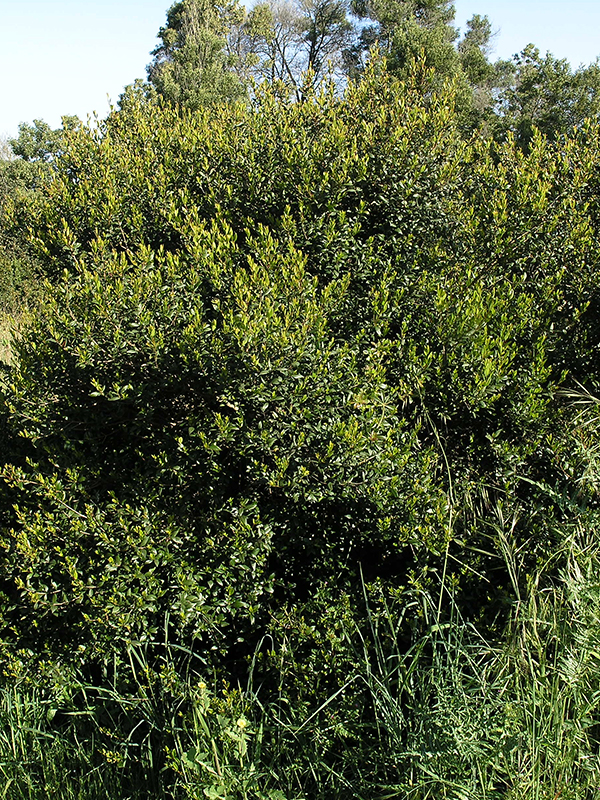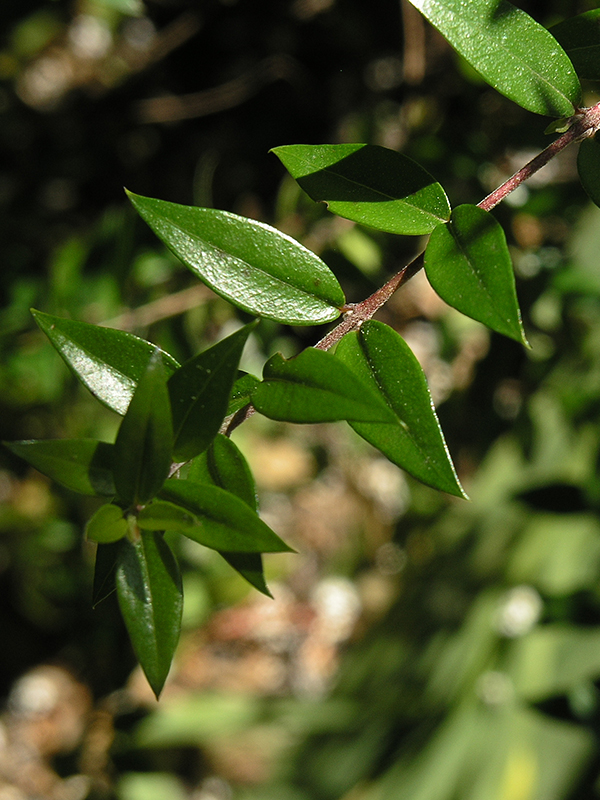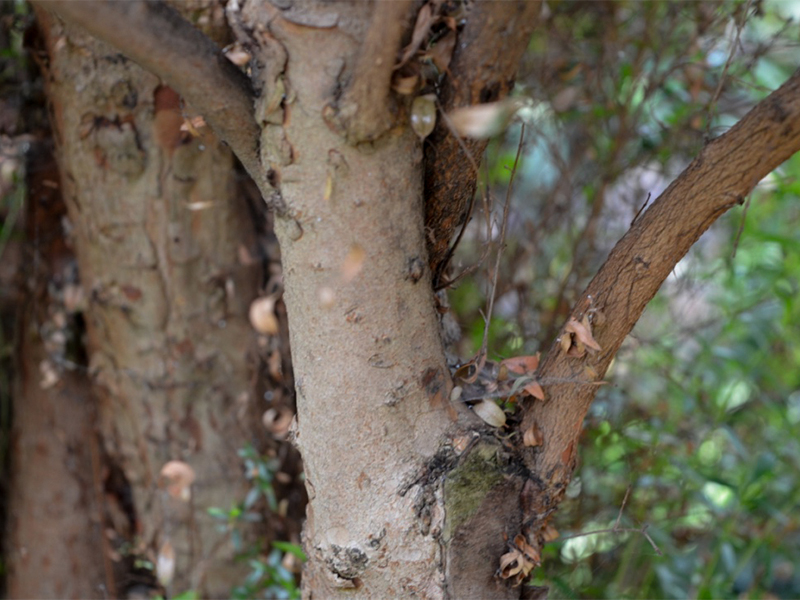
Tropicals, Woody > Myrtus > Myrtus communis > Myrtus communis
Myrtus communis
Myrtle
Origin: The Mediterranean region and western Asia.
| Family |
| Myrtaceae |
| Genus |
| Myrtus |
| Species |
| communis |
| Category |
| Tropicals, Woody |
| Type |
| Tree (evergreen), Shrub (evergreen) |
| Pronunciation |
| USDA Hardiness Zone |
| 8 - 10 |
| Canadian Hardiness Zone |
| Requires cool season protection under glass. |
| RHS Hardiness Zone |
| H2 - H5 |
| Temperature (°C) |
| -12- 4 |
| Temperature (°F) |
| 10 - 40 |
| Height |
| 1 - 2 m |
| Spread |
| 1 - 2 m |
Photographs
Description and Growing Information
Flowering Period
| General Description |
| A sturdy ornamental shrub, blooms are white in the summer and produces edible berries in autumn. |
| Landscape |
| A low maintenance ornamental shrub or small tree, it can be used as an informal hedge. |
| Cultivation |
| Grows best in well-drained, moist soil and sheltered from high winds. |
| Shape |
| A dense shrub or tree that can easily be trained to hold different forms. |
| Growth |
| Medium |
| ID Characteristic |
| Green elliptical leaves grow to be 5 cm long and release a strong aroma when crushed. |
| Pests |
| Mites and scale. |
| Habitat |
| It is able to withstand coastal conditions but is tender to frost. |
| Flower/Leaf Bud Description |
| The buds are small and unnoticeable. |
| Leaf Description |
| Leaves are elliptical or ovate, up to 5 cm long. |
| Flower Description |
| 5 petals create a bowl shape with numerous stamens, up to 10 cm across. They are hermaphrodite. |
| Fruit Description |
| Edible, ovoid berries ripen in October, bearing several seeds, up to 1 cm in diameter. |
| Colour Description |
| The bark is light brown or grey. Leaves are dark green. Flowers are white. When ripe, berries are purple to blue-black. |
| Texture Description |
| The leaves are leathery and the bark is smooth. |
| Notable Specimens |
| Centennial Conservatory, Thunder Bay, Ontario, Canada. |
| Propagation |
| In late winter, soak seeds for 24 hours in warm water before sowing them in a greenhouse. Move each seedling to individual pots as soon as they can be handled. The first winter should be spent in the protection of the greenhouse. |
| Ethnobotanical Uses (Disclaimer) |
| Berries are edible and may be eaten raw, but are at best moderately tasteful. Dried flowers, leaves, fruits, and even the wood are used to flavour foods. Used in the islands of Sardinia and Corsica to produce an aromatic liqueur called Mirto. Contains high levels of salicylic acid, a compound related to aspirin, so can be used to treat fever and pain. In Greek mythology and ritual myrtle was sacred to the goddesses Aphrodite and Demeter. In Jewish liturgy, the myrtle is one of the four sacred plants of Sukkot, the Feast of Tabernacles representing the different types of personality making up the community. In Neo-Pagan and Wicca rituals, myrtle is now commonly associated with and sacred to Beltane (May Day). |



